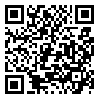BibTeX | RIS | EndNote | Medlars | ProCite | Reference Manager | RefWorks
Send citation to:
URL: http://sjsph.tums.ac.ir/article-1-88-en.html
Background and Aim: Multiple sclerosis (MS) is considered as a common inflammatory disease of the human central nervous system (CNS). 4 amino pyridine (4-AP), a potassium channel blocker, is used widely in MS treatment to reduce fatigue and cachexia often experienced by the patients. The objective of this study was to get a better understanding of the mechanism of action of this drug, using the cell culture model. More specifically, we attempted to determine the effects of the drug on 1. The profileration of, and its cytotoxicity on, the neurons, and 2. The activity of MMP-9 in the neurons.
Materials and Methods: Considering the available reports on the wide range of 4-AP effects, we designed this study to investigate its possible role in proliferation or cytotoxicity of the MS cellular model, i.e. astrocytoma U373-MG, using the MTT assay technique. We also analyzed the effect of 4-AP on cell functionality as assessed by matrix metalloproteinase-9 (MMP-9) zymography.
Results: The results showed that while 4-AP at a concentration of 0.1 and 1 mM has no significant cytotoxic effects on the treated cells, it has remarkable MMP-9 inhibitory effects (p<0.01). The proliferation analyses confirmed the stability of 4-AP effects on cell functionality.
Conclusion: On the whole, the results of the present study show the desirable effect of 4-AP on MMP-9 activity at non-cytotoxic doses, promising its further therapeutic applications.
Received: 2009/12/21 | Accepted: 2010/05/18 | Published: 2013/08/9
| Rights and permissions | |
 |
This work is licensed under a Creative Commons Attribution-NonCommercial 4.0 International License. |





